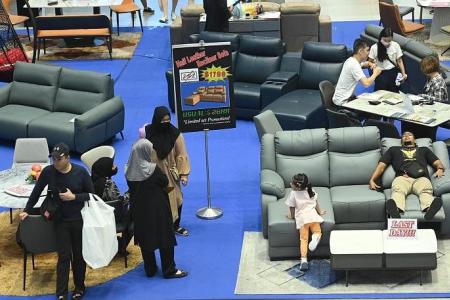Use of formaldehyde in furniture, adhesives being reviewed
The authorities are reviewing the use of formaldehyde in products such as furniture and adhesives, even as five MPs raised parliamentary questions calling for greater action on the issue.
This follows recent media reports of people here falling ill due to high formaldehyde levels in their furnishings, with CNA reporting in July that one family paid $1,000 for treatments to their wooden cabinets and shelves after their young children repeatedly fell sick due to high levels of the chemical.
Mr Melvin Yong (Radin Mas) asked how many complaints the National Environment Agency (NEA) had received over the past five years about high levels of formaldehyde in new furniture, while Dr Wan Rizal (Jalan Besar GRC) inquired about plans to review and update existing regulations on indoor air quality and furniture safety standards.
Often found in resins and glues used in wooden furniture – as well as in composite wood products such as plywood and fiberboard – formaldehyde can cause irritation of the eyes, nose and throat, with long-term exposure linked to certain cancers.
Earlier in 2024, it was announced that Singapore will ban formaldehyde in paint used for the interiors of buildings from January 2026.
Speaking in Parliament on Aug 6, Senior Parliamentary Secretary for Sustainability and the Environment Baey Yam Keng said NEA was “actively studying” the issue, including reviewing international best practices, guidelines and regulatory requirements, though he did not say when the review would be concluded.
Since 2020, NEA had received 19 cases of feedback on formaldehyde levels arising from renovation works, Mr Baey added.
“The furniture industry has made an effort to lower formaldehyde emissions,” he said.
He noted that in 2023, the Alliance for Action on Sustainable Spaces – comprising the Singapore Business Federation, Singapore Furniture Industries Council (SFIC) and Singapore Green Building Council (SGBC) – had launched a set of industry guidelines and recommendations to improve indoor air quality, including suggestions for modified emission limits for products and furnishings.
“We encourage the public to use products that are certified with the Singapore Green Labelling Scheme administered by the Singapore Environment Council or the Singapore Green Building Product certification scheme administered by the SGBC,” he said.
Wood products with such labels are certified to have low or non-detectable formaldehyde levels, while interior paint with these labels are required to have no formaldehyde, Mr Baey said.
Additionally, the SFIC website lists member companies that have pledged to supply or adopt products with low levels of formaldehyde, or do not contain the chemical at all.
In indoor spaces where products with formaldehyde are installed, Mr Baey advised people to open doors and windows as well as use fans and ventilation systems to improve air circulation and dilute the concentration of formaldehyde fumes.
Mr Yong, who is also president of the Consumers Association of Singapore, noted that in the first half of 2024, the association received 10 complaints about strong chemical odours emitted by new furniture, with some reporting symptoms such as headaches and dizziness after suspected formaldehyde exposure.
Mr Yong asked if regulations could be introduced to govern the use of formaldehyde in furniture.
In response, Mr Baey said that in addition to the upcoming ban on formaldehyde in paint, the authorities are reviewing how the law can be applied to the use of formaldehyde in other products such as composite wood items and adhesives.
He added that concerned consumers should discuss the matter with their renovation contractors and request products that do not contain the chemical.
Get The New Paper on your phone with the free TNP app. Download from the Apple App Store or Google Play Store now


